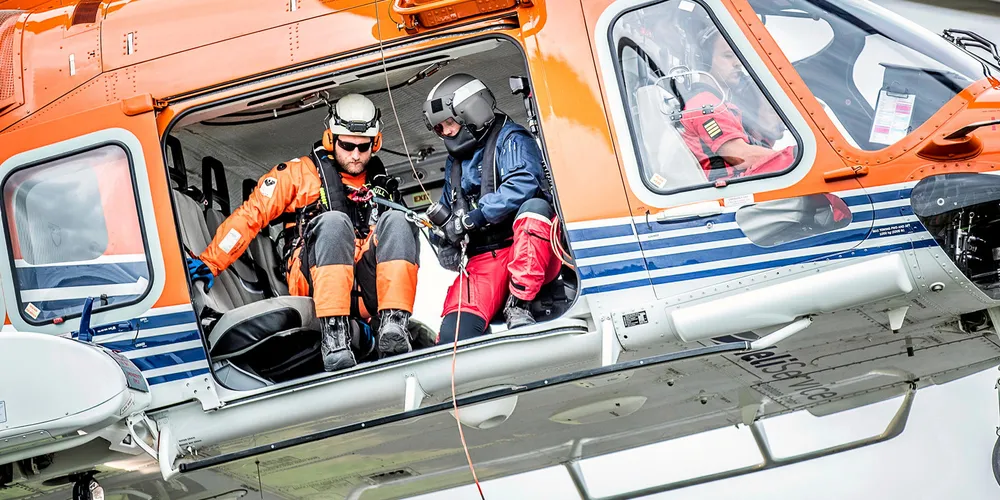In a first for the US offshore wind sector, development partners Orsted and Eversource signed a contract for helicopter-enabled crew change operations for their South Fork , Revolution and Sunrise wind projects with German helicopter service provider HeliService International.
HeliService, the market leader in German offshore energy, will deploy Leonardo AW 169 helicopters with a capacity for eight passengers and a top speed of 268km/h — far faster than a crew transfer vessel’s (CTV) 50km/h maximum.
Oliver Freiland, managing partner at HeliServe, says that helicopter crew transport can nearly double the productivity of workers and technicians by saving hours on transportation, increasing the amount of time spent on the work site from four to five hours to eight to nine hours.
Helicopters can operate almost independently of weather conditions, with European regulations allowing for vertical hoists in seas as high as 6 metres — far above the capabilities of CTV. This enables greater planning certainty for developers aiming to get projects finished in tight construction seasons, particularly in the US where construction will be limited not only by weather but by marine mammal migration periods as well.
“Customers do not need to worry as much whether a project can be completed, or whether a turbine can be reached for maintenance, because with the helicopter, 96% of the time that service can be conducted,” Freiland told Recharge.
The signing of a helicopter contract is another sign that the US offshore wind sector is getting ready to plant steel in the Atlantic Ocean.
South Fork follows Avangrid-CIP’s Vineyard Wind as the second US commercial scale offshore wind project to enter construction,
breaking ground at its Long Island, New York headquarters last February. Onshore construction has commenced for the 132MW project, which will see a dozen 11MW Siemens Gamesa turbines installed by mid-2023, with plans to commission by the end of that year.
Along with South Fork, the Orsted-led JV is developing the
880MW Sunrise Wind project, which has signed an offtake contract with the New York State Energy Research and Development Authority (Nyserda). The Bureau of Ocean Energy Management (BOEM), the federal agency charged with managing energy development in federal waters,
issued its notice of intent (NOI) to conduct a environmental impact statement last September, and the project expects to receive its record of decision and final approvals in mid-2023.
The JV’s Revolution Wind will split its offtake, with 400MW going to Rhode Island, and the remaining 304MW to Connecticut. The developers recently
contracted Nexans cable laying vessel Aurora for the project's export cable installation. Revolution Wind was
issued its NOI last April, and is also anticipating approval to begin construction in mid-2023.
In anticipation of up to 2GW of offshore wind construction, the JV is investing in port and manufacturing facilities throughout the region, including $77.5m into the $235m upgrade of the
Connecticut State Pier in New London, Connecticut. The State Pier is now under construction now and is expected to be completed by mid-2023 to serve as the staging site for all three projects.
Orsted is augmenting this capacity with a $24m investment into
Rhode Island’s ProvPort for manufacturing foundation platforms and another $16m into the Quonset Business Park for unstated component assembly.
Orsted is among the largest offshore wind developers in the US, with over 4GW of capacity under development in various partnerships and subsidiaries in multiple states, and is a key player in pushing the nation to realize its
2030 national goals of 30GW of offshore wind capacity spinning off its coasts.
